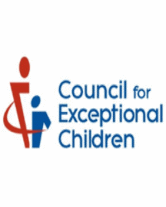Managing the Classroom: Teaching Students with ADD
A strong classroom management system helps all students develop positive classroom behavior, study habits, and organizational skills. For students with attention deficit disorder, these behavioral management systems often provide the structure they need to manage their own behaviors on a daily basis.
At a minimum, you can provide the essential foundation for improving behaviors and promoting student success by maintaining an orderly, predictable classroom environment. Establish clear rules and state them in positive terms, so that students know what is expected of them.
Helping the Student Manage Behavior
Explicit attention to reducing the incidence of problematic behaviors is essential to help students with attention deficit disorder reach their academic potential. For years, teachers have had positive results from behavioral management techniques such as positive reinforcement, negative reinforcement, and response contingencies. The key is to be consistent in applying positive and negative consequences.
Positive Reinforcement
You will probably find that many students with attention deficit disorder benefit from a structured reinforcement system. Let the student know what behaviors will be rewarded. Select reinforcers that are of interest to the student.
Rewards don't necessarily need to cost a lot of money; for example, an image made with an ink pad, a trophy or a stuffed animal that sits on the student's desk, or a visit with the principal might appeal to younger children. Older students tend to appreciate special privileges such as free time or time at the computer station. Remember, as students become proficient in displaying appropriate behaviors, you can begin to phase out reinforcement by decreasing its frequency.
Negative Consequences
When you must use negative consequences to reduce the frequency of a troublesome behavior for instance, strategies such as planned ignoring, time-out, loss of privileges, and reprimands keep in mind that such practices should always be paired with reinforcement for an appropriate alternative behavior. Students need to know what they should be doing, as well as what will not be tolerated.
Response Contingencies
Token economy systems are widely used classroom management systems that have promising results for students with attention deficit disorder. A token system is based on tokens that can be exchanged for reinforcers, contingencies that specify the conditions under which the tokens may be obtained or lost, and exchange rates for tokens. Many token systems use points.
For example, students in Irvine, California earn daily points for positive behaviors such as following quiet rules, following seat rules, maintaining appropriate peer relations, attending to class lessons, and completing work neatly. Points are subtracted for negative behaviors. As students become proficient at demonstrating positive behaviors, the intervals between receiving rewards can increase. This school-based reward system is administered by counselors during the last 20 minutes of the day.
Elementary-aged youngsters in Bradenton, Florida experience a five-level point system that assists teachers in monitoring and rewarding appropriate behavior, such as following rules and participating in lessons. The system works this way:
- Each student starts at level 1. To move up to succeeding levels, the child must meet certain behavioral expectations every day for a month.
- At each succeeding level, privileges are increased.
- At the end of the day, students discuss their behavior. A daily report card is sent home, and a graph is used to chart students' progress.
Another variation of a point or token system focuses on increasing student work completion. This system is a type of tic-tac-toe game developed by a school psychologist in Sandy, Utah. The game consists of a specially made tic-tac-toe card (8 1/2 x 11-inch card with nine pockets for holding the tokens), tokens, reinforcements, and progress charts.
Each square on the tic-tac-toe board has a number that corresponds to a number on a token. The object of the game is to place three tokens in their pockets across, down or diagonally on the playing card. Numbers representing units of work to be completed (e.g., number of questions to answer or pages to read) are also printed on the tokens.
Here is how the game is played. The student draws a token and completes the amount of work indicated. Once the work is completed, the student matches the token to the square on the card. This process continues until the student has achieved a "win." To keep motivation high and to show the students' progress, charts are kept.
Charting progress can be not only reinforcing, but also fun. In Sandy, Utah "magic grids" add the element of surprise to reinforcement. The "Magic Grid" is a nine-space grid with the numbers 1 through 5 listed at the top of each space. In each space a reinforcement has been written in invisible ink. Students randomly select a space and tally points in that space. When a student has earned all of the points for that square, the secret message is revealed. Another variation is the "Stairway to Success" chart. Students earn points toward each stair, receiving a reinforcement when they reach the top.








